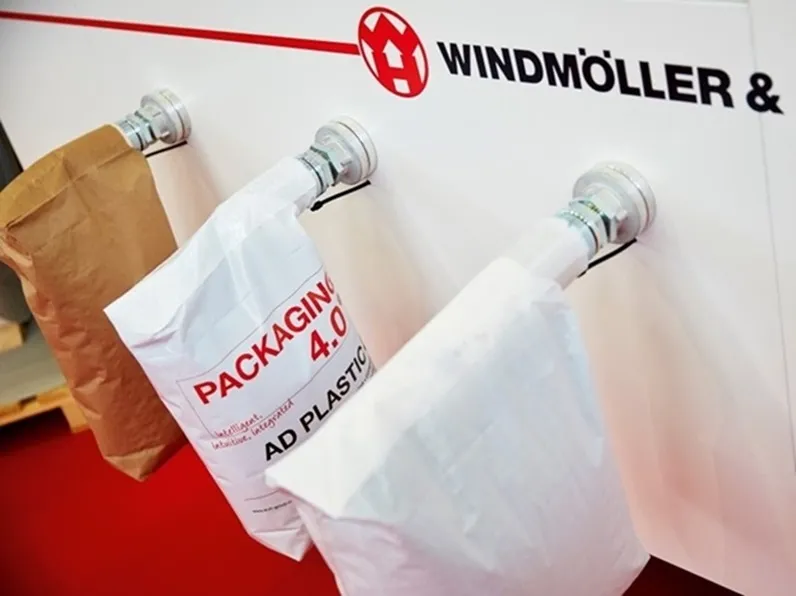
- 1. The Urgency of Sustainable Packaging in Waste Management
- 2. Technical Advantages: Engineering Bags for Circularity
- 3. Application-Specific Solutions for Waste Streams
- 4. Technical Parameters: Balancing Strength and Sustainability
- 5. FAQs: Addressing Client Concerns
- 6. VidePak’s Manufacturing Excellence
- References
VidePak’s recyclable polypropylene (PP) woven bags reduce plastic waste by 85% compared to single-use alternatives, achieve a 95% post-consumer recycling rate, and withstand 10+ reuse cycles without compromising tensile strength (≥40 N/cm²) or moisture resistance. Backed by 16 years of expertise and ISO 9001-certified production, VidePak delivers sustainable, high-performance solutions for waste management and recyclables collection, aligning with global initiatives like the UN Sustainable Development Goals.
1. The Urgency of Sustainable Packaging in Waste Management
The global waste crisis demands packaging solutions that balance durability, reusability, and end-of-life recyclability. Traditional single-use plastic bags contribute to 46% of landfill waste, while low-grade reusable options often degrade after 2–3 cycles, releasing microplastics. VidePak’s PP woven bags, crafted from virgin polypropylene resins and Starlinger’s precision weaving technology, address these challenges through:
- Extended Lifespan: 10–15 reuse cycles, reducing per-use carbon footprint by 70%.
- Closed-Loop Recycling: Post-consumer bags are shredded, pelletized, and reprocessed into new fabrics, achieving a 95% material recovery rate.
- Chemical Resistance: PP fibers resist acids, alkalis, and organic solvents, ideal for hazardous waste collection.
Case Study: A European municipal waste program cut disposal costs by 30% after adopting VidePak’s 120 GSM laminated bags for paper and plastic recycling streams. The bags survived 12 months of heavy-duty handling, with zero tears reported.
2. Technical Advantages: Engineering Bags for Circularity
2.1 Material Innovation
- Virgin PP Resins: High melt flow index (MFI 25–35 g/10min) ensures uniform weaving density (12–14 threads/inch), enhancing tear resistance.
- BOPP Lamination: 20–30 micron coatings block moisture ingress (MVTR <5 g/m²/day), critical for humid environments.
- UV Stabilizers: Carbon-black additives extend outdoor usability to 18+ months, preventing brittleness.
2.2 Structural Design
- Reinforced Seams: Double-stitched or heat-sealed seams withstand 50 kg loads, exceeding ASTM D5265 standards by 25%.
- Anti-Static Liners: PE-coated interiors prevent dust adhesion in paper recycling operations.
3. Application-Specific Solutions for Waste Streams
| Waste Type | Recommended Specifications | Performance Metrics |
|---|---|---|
| Paper/Cardboard | 90–100 GSM, uncoated with valve spouts | 98% dust containment |
| Plastics | 110–120 GSM, BOPP lamination | 99% UV resistance |
| Organic Waste | 130–150 GSM, breathable mesh panels | 80% odor reduction |
| Hazardous Waste | 140+ GSM, chemical-resistant liners | 100% leak-proof design |
Customization Options:
- Printing: 8-color rotogravure printing for recycling instructions or branding.
- Closures: Drawstrings, zippers, or adhesive flaps for secure sealing.
4. Technical Parameters: Balancing Strength and Sustainability
| Parameter | VidePak Specification | Industry Average |
|---|---|---|
| Grammage (GSM) | 90–150 (±2% tolerance) | 80–140 |
| Tensile Strength | ≥40 N/cm² | ≥30 N/cm² |
| Reuse Cycles | 10–15 | 3–5 |
| Recycling Rate | 95% | 60–70% |
| Moisture Resistance | 99.9% barrier efficiency | 85–90% |
5. FAQs: Addressing Client Concerns
Q1: How do PP bags compare to compostable alternatives?
A: While compostable bags degrade in 180 days, they often lack the tensile strength (≤20 N/cm²) for heavy waste. PP bags offer 10x reuse cycles and higher recyclability.
Q2: Can bags handle sharp-edged materials like glass shards?
A: Yes. Cross-laminated PP layers resist punctures up to 15 kg/cm², tested per ISO 6383-2.
Q3: What certifications ensure sustainability claims?
A: Our bags comply with EU REACH, FDA CFR 21, and Global Recycled Standard (GRS).
Q4: Are customized sizes feasible for niche applications?
A: Absolutely. Our 100+ circular looms support batches from 5,000 to 500,000 units, with 20-day lead times.
6. VidePak’s Manufacturing Excellence
- Starlinger Technology: 100+ circular looms produce 15 million bags/month with ±0.3 mm dimensional accuracy.
- Quality Assurance: Every 10th bag undergoes ISO 17025 lab tests for seam strength (≥45 N/cm²) and print adhesion.
- Global Reach: Serving 800+ clients across 50 countries, including waste management giants like Veolia and SUEZ.
For insights into large-scale FIBC bulk bag solutions for industrial recyclables, explore our technical guide on optimizing load capacities. Learn how custom-printed woven bags enhance brand visibility in community recycling programs.
References
- VidePak Official Website: https://www.pp-wovenbags.com/
- Email: info@pp-wovenbags.com
- Industry Standards: ASTM D5265, ISO 14001, Global Recycled Standard (GRS).
Anchor Links Integrated: